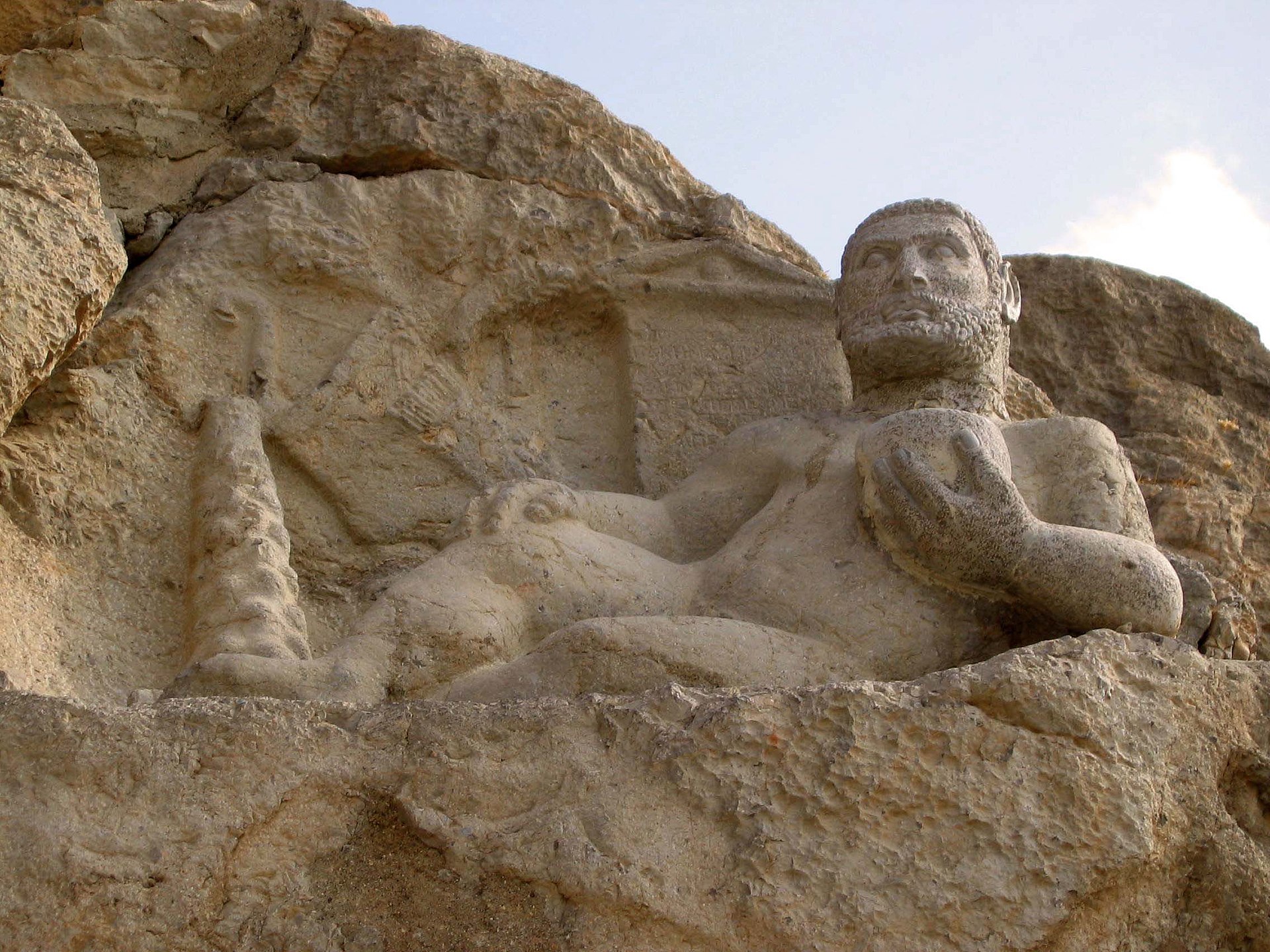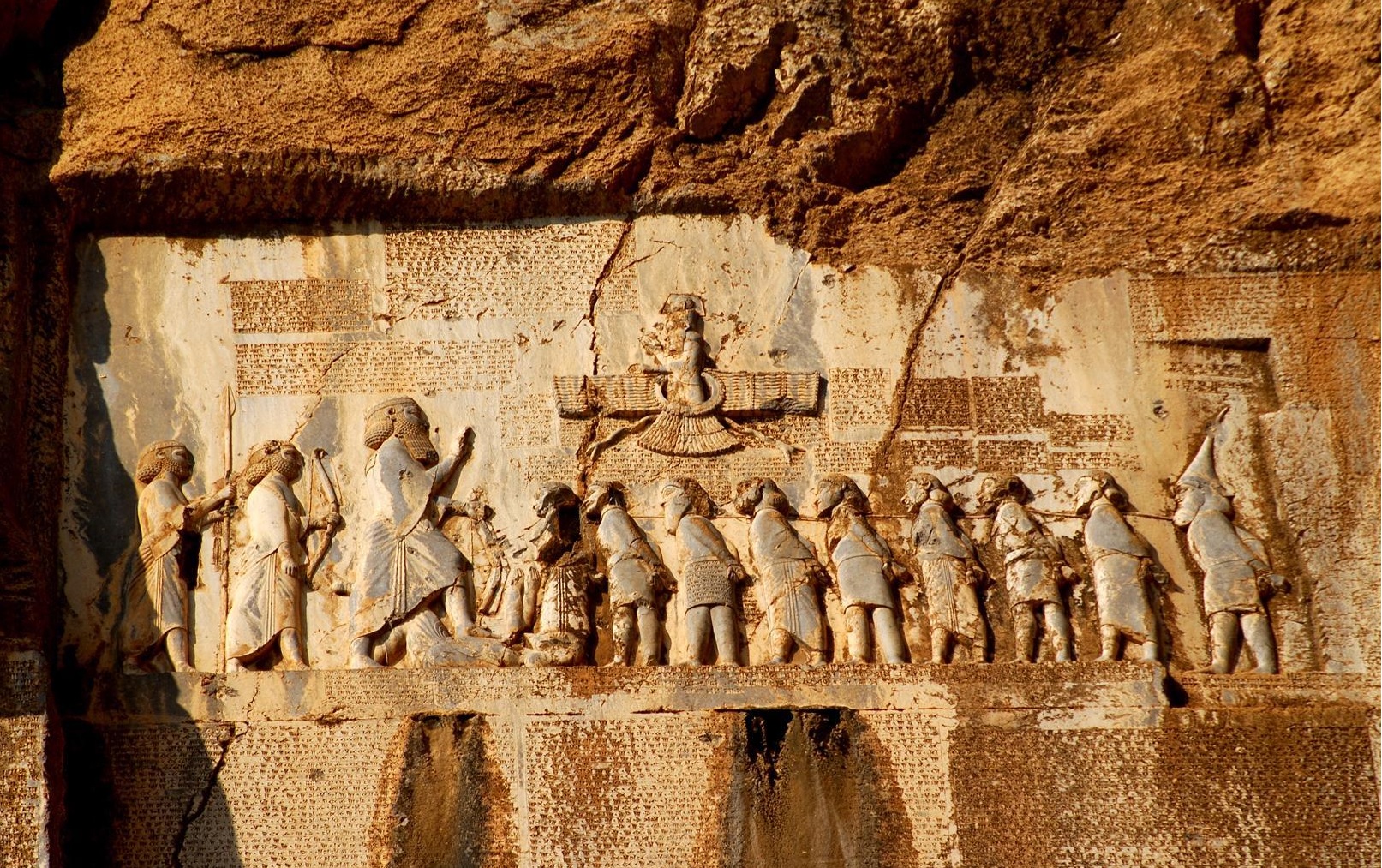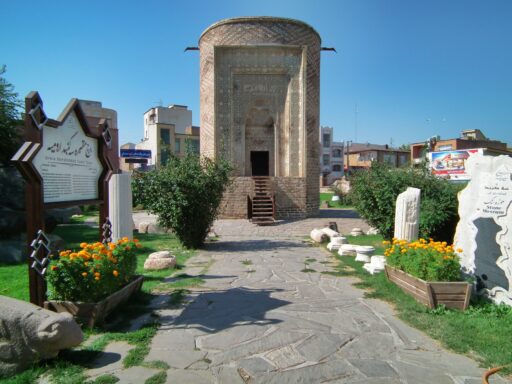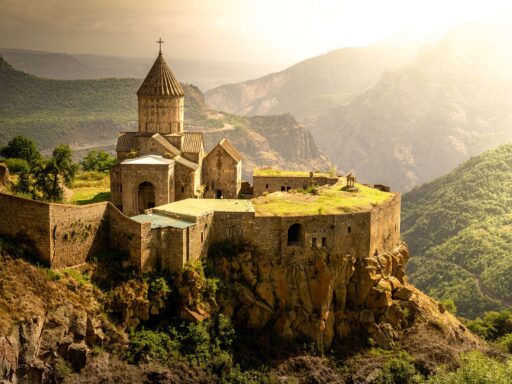Introducing The Bisotun
Located in the mountains of Kermanshah province in western Iran lies one of the most magnificent ancient rock reliefs in the world – Bisotun. This UNESCO World Heritage site contains incredible bas-relief carvings depicting the triumph of King Darius I over his enemies, as well as cuneiform inscriptions that were crucial in the decipherment of the ancient Persian language.
An Imposing Natural Setting
Bisotun is situated along the ancient trade route that linked the Iranian high plateau with Mesopotamia. The site is centered around a towering limestone cliff located near the modern city of Kermanshah. Measuring over 500 meters high and 1,500 meters wide, the imposing cliff dominates the surrounding landscape. Carved into the steep rock face high above the ground are massive carvings depicting King Darius I and his attendants and prisoners. Smaller inscriptions in cuneiform also cover large areas of the rock face. The natural setting for this ancient artwork could not be more spectacular.

The Creation of the Rock Reliefs
The Bisotun relief and inscriptions were created on the orders of Darius I, who reigned over the Persian Achaemenid Empire from 522 to 486 BC. During the early years of Darius’s reign, he faced considerable opposition from those challenging his right to rule. By 521 BC, however, Darius had consolidated his kingship after defeating numerous rivals.
To commemorate these victories and cement his legitimacy as king, Darius commissioned the carvings at Bisotun around 520 BC. The imposing site high above the plains below allowed the artwork to be seen from vast distances, broadcasting the king’s might. Teams of skilled stoneworkers used primitive tools and techniques to carve the elaborate scene over an estimated period of several years.
Depictions of King Darius’s Triumphs
The centerpiece of the Bisotun rock relief is the massive carving of King Darius himself, measuring over 6 meters tall. He is depicted standing triumphantly over a platform of 6 life-size captured enemies, who represent the leaders of various provinces who rose up against his rule.
Darius holds a bow in his left hand and faces right with his right foot firmly planted on the body of a defeated foe. A large, winged figure hovers above Darius, representing the Zoroastrian supreme deity Ahura Mazda, who blesses Darius’s kingship.
Below the king’s platform are 28 attendant figures, shown carrying spears and bows. At the top right appears the presiding officer of the kingdom. To the left of Darius stand 8 figures representing the king’s bodyguards. A Persian emissary and supplicant kneel before the king pleading for mercy.
The striking carvings convey a vivid sense of action and drama while projecting Darius’s legitimacy, military might, and divine right to rule.

The Trilingual Cuneiform Inscriptions
In addition to the imposing rock relief, Bisotun contains one of the most significant ancient writings ever discovered – a long cuneiform inscription written in three languages: Old Persian, Elamite, and Babylonian. This inscription, known as the Bisotun Inscription, includes around 1,200 lines of text carved in approximately 100 columns across large areas of the cliff face.
The inscription describes Darius’s royal lineage and provides a detailed account of the rebellions he faced early in his reign. It explains how Darius gained the support of Ahura Mazda and crushed the usurpers who tried to seize his throne. The text provided invaluable first-hand historical information about this volatile period of the Achaemenid Empire.
Even more significant was the fact that the inscription was written in three languages using the cuneiform script. Until its discovery and decipherment in the 19th century, Old Persian and Elamite were unknown languages. The Rosetta stone-like trilingual text was key to unlocking the meanings of cuneiform, opening up whole lost languages and civilizations to modern understanding.

Discovery and Study by Western Explorers
For centuries, the monumental carvings and inscriptions at Bisotun lay largely unknown beyond Iran. It was not until 1621 that the first brief descriptions of the site by Western travelers appeared. In 1835, the pioneering English adventurer Henry Rawlinson visited Bisotun and began copying substantial parts of the cuneiform inscription, although he was unable to understand it.
Over the next decades, Rawlinson and other scholars worked painstakingly to decipher each section of text. Their breakthrough came when they recognized that the first sections of the three languages contained the same information, providing a sort of “Rosetta stone” for deciphering cuneiform. By 1847, Rawlinson and others had deciphered the inscription and achieved an astonishing rediscovery of the ancient Persian language and scripts.
In the late 19th and early 20th centuries, other European archeologists visited Bisotun and made impressions and photographs documenting the extensive rock carvings and inscriptions. Their pioneering work brought the magnificent ancient artwork of Bisotun to the attention of the world.

UNESCO Recognition and Threats to Preservation
The cultural and historical importance of Bisotun was recognized in 2006 when it was inscribed as a UNESCO World Heritage Site. This status highlights its significance as an artistic masterpiece, a monumental document recording ancient history, and part of the shared heritage of humanity.
Despite UNESCO protection, Bisotun faces ongoing threats to its preservation from both natural and human factors. Environmental conditions including extreme temperatures, dissolving minerals in the rock, and mudslides have caused gradual deterioration and damage over time. Modern development pressures, illegally defacing or altering parts of the site, as well as a major highway blasted out along the cliff base also endanger its integrity.
Ongoing conservation and monitoring efforts are needed to protect this irreplaceable cultural treasure for future generations. Strict enforcement of legal protections must be accompanied by improved site management and awareness of its fragile nature. With proper safeguarding, the ancient rock reliefs and inscriptions of Bisotun will continue to awe and inspire visitors from around the world.
An Enduring Masterpiece of Antiquity
Created over 2,500 years ago high on a cliff face in the mountains of western Iran, the monumental rock relief and inscriptions of Bisotun remain one of the world’s greatest surviving works of ancient art. This ornate tableau commemorating the reign of King Darius I provides a vivid glimpse into the distant past while demonstrating the astonishing skill of ancient stone carvers. As both an archaeological landmark and a stunning artistic achievement, Bisotun stands out as one of the most magnificent sites of the ancient world.






